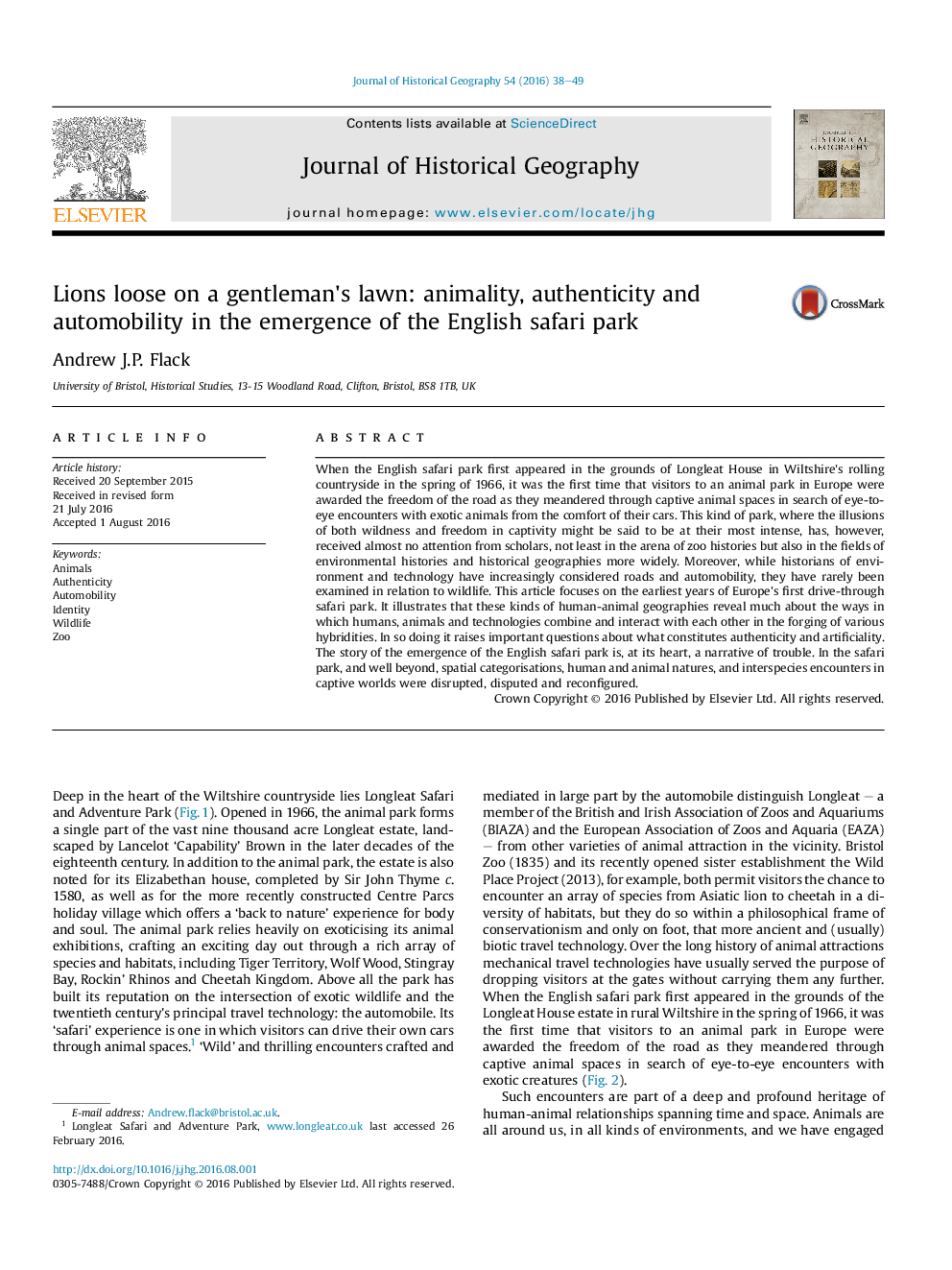| Article ID | Journal | Published Year | Pages | File Type |
|---|---|---|---|---|
| 7447185 | Journal of Historical Geography | 2016 | 12 Pages |
Abstract
When the English safari park first appeared in the grounds of Longleat House in Wiltshire's rolling countryside in the spring of 1966, it was the first time that visitors to an animal park in Europe were awarded the freedom of the road as they meandered through captive animal spaces in search of eye-to-eye encounters with exotic animals from the comfort of their cars. This kind of park, where the illusions of both wildness and freedom in captivity might be said to be at their most intense, has, however, received almost no attention from scholars, not least in the arena of zoo histories but also in the fields of environmental histories and historical geographies more widely. Moreover, while historians of environment and technology have increasingly considered roads and automobility, they have rarely been examined in relation to wildlife. This article focuses on the earliest years of Europe's first drive-through safari park. It illustrates that these kinds of human-animal geographies reveal much about the ways in which humans, animals and technologies combine and interact with each other in the forging of various hybridities. In so doing it raises important questions about what constitutes authenticity and artificiality. The story of the emergence of the English safari park is, at its heart, a narrative of trouble. In the safari park, and well beyond, spatial categorisations, human and animal natures, and interspecies encounters in captive worlds were disrupted, disputed and reconfigured.
Related Topics
Social Sciences and Humanities
Arts and Humanities
History
Authors
Andrew J.P. Flack,
